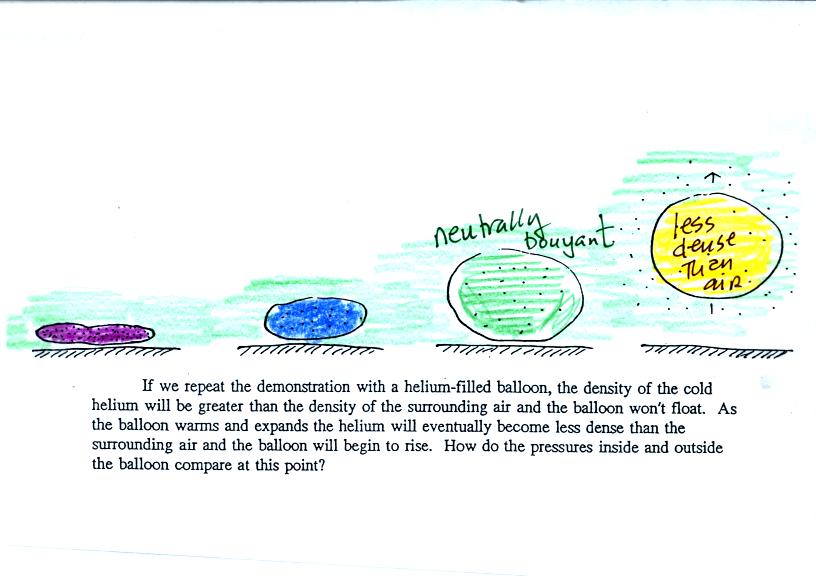Wednesday Feb. 3, 2010
Two songs ("Tiger Mountain Peasant Song" and "Mykonos") from the Fleet Foxes before class
today.
Try to return the Experiment #1 materials this week so that you
can pick up the supplementary information sheet. The experiment
reports are due next Monday (Feb. 8). You can also drop off the
materials in my office (PAS 588) anytime during the day between about 9
am and 5 pm (there's a box just inside the office door). The
graduated cylinders are used in Experiment #2 and I hope to distribute
those materials Wednesday or Friday next week.
If today's quiz were a real quiz you'd have the entire period to
work on it. But since this was just a Practice Quiz we did cover
a little bit of new material today.
Last Monday we learned about the ideal gas law and Charles Law.
Today we had a quick look at the forces that determine whether parcels
of air rise or sink. The information is found on p. 53
in the photocopied
ClassNotes.

Basically it comes down to this - there are two forces
acting on a parcel* of air in the atmosphere:
1. Gravity pulls downward. The strength of the gravity force
depends
on the mass of the air inside
the parcel. This force is just the weight of the parcel
2. There is an upward pointing pressure difference force.
This
force is
caused by the air outside
(surrounding) the parcel. Pressure decreases with increasing
altitude. The pressure of the air at the bottom of a parcel
pushing upward is slightly stronger than the pressure of the air at the
top of the balloon that is pushing downward. The overall effect
is an upward pointing force.
When the air inside a parcel is exactly the same as the air
outside,
the two forces are equal in strength and cancel out. The parcel
is
neutrally bouyant and doesn't rise or sink.
If you replace the air inside the balloon with warm low density
air, it
won't weigh as much. The gravity force is weaker. The
upward
pressure difference force doesn't change (because it is determined by
the air outside the balloon which hasn't changed) and ends up stronger
than the
gravity force. The balloon will rise.
Conversely if the air inside is cold high density air, it weighs
more. Gravity is stronger than the upward pressure difference
force and the balloon sinks.
* the
word
parcel just means a small volume of air.
We'll look at this in a slightly different way in class on
Friday.
We'll find that when something is less dense than the gas or fluid
surrounding it, the object will rise or float (wood floats in water
because the wood is less dense than the water). Objects that are
denser than the surrounding fluid will sink ( a rock thrown into water
will sink).
We did a short demonstration to show how density can determine
whether an object or a parcel of air will rise or sink. We used
balloons filled with helium (see bottom of p. 54 in
the photocopied Class
Notes). Helium is less dense than air even when the
helium has the same temperature as the surrounding air. A
helium-filled balloon doesn't need to warmed up in order to rise.

We dunked the helium-filled balloon
in some liquid nitrogen to cool
it
and to cause the density of the helium to increase. When
removed
from the liquid nitrogen the balloon didn't rise, the gas inside was
denser than the surrounding air (the purple and blue balloons in the
figure above). As the balloon warms and expands
its density decreases. The balloon at some point has the same
density as the air around it (green above) and is neutrally
bouyant. Eventually the balloon becomes less dense that the
surrounding air (yellow) and floats up to the ceiling.
Something like this happens in the
atmosphere.

The rest of the class period was devoted to the Practice
Quiz. You should get the graded quizzes back in class on Friday.
Here are the answers
to the questions on the Practice Quiz.



